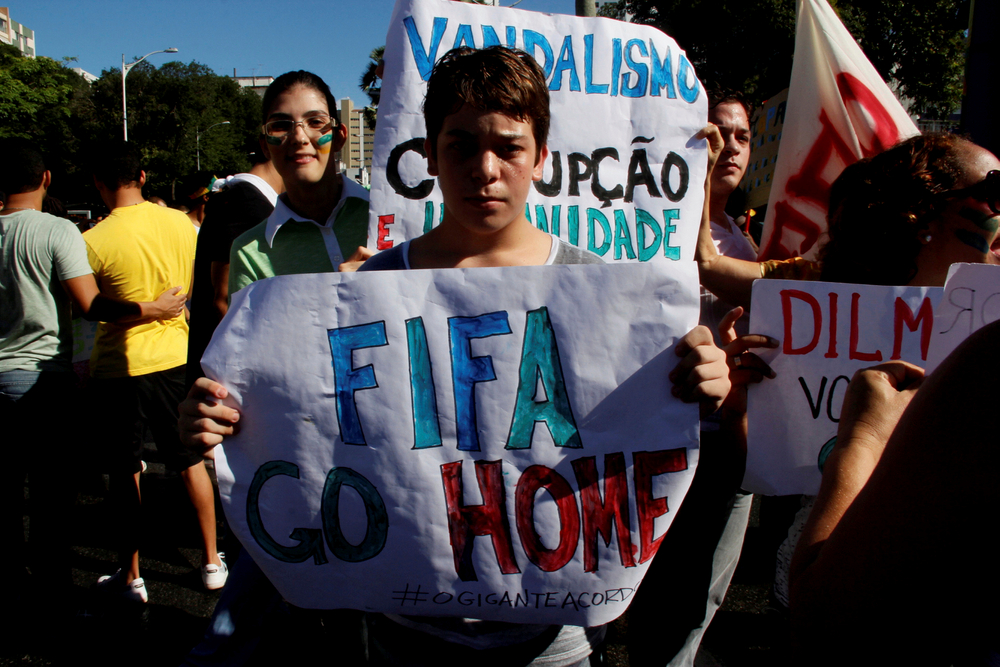It was a sunny Wednesday afternoon in June 2013, and Brazil and Uruguay were gearing up to play the Confederations Cup semi-final in Belo Horizonte. A few hundred meters away from the Mineirão stadium, some 50,000 demonstrators crowded the Abrahão Caram Avenue. Many wearing sweaters or t-shirts over their faces as impromptu masks, they chanted: “Hey, FIFA, go back to Switzerland.”
Criticism of Brazil hosting of the 2013 Confederations Cup and 2014 World Cup had served as a rallying cry for millions of people, with similarly large protests taking over the streets across Brazil in the previous weeks. Protesters drew attention to the billions of reais being spent on building and renovating football stadiums to “FIFA standards.” Calling for better public services, Brazilians demanded that healthcare and education be improved to “FIFA standard” too.
So they took to the streets, many of them for the first time.
The first tear gas bombs came soon after. Like many of the other protests, the one in Belo Horizonte would also end in violence.
The tear gas was a first for me. I was several meters away from the police barrier and in a large open space, but tear gas does not pick its targets. It makes your eyes burn; the feeling is akin to someone rubbing pepper on your face. Some demonstrators brought bottles of vinegar with them — a rumor had spread that it supposedly mitigates the effects of tear gas (it does not).

Like a child playfully testing their limits, the crowd would recede and then go up to face the police, again and again. At every attempt to break the police barrier and get closer to the stadium, officers threw tear gas bombs farther and farther into the crowd.
As a reporter at the time for the now-defunct Veja BH weekly magazine, I was privy to some of the organization behind the demonstration, having attended two preparatory meetings the night before.
At the Santa Tereza Viaduct, a landmark in downtown Belo Horizonte, a self-declared feminist militant told a mostly young, left-wing crowd that “the police will want confrontation, and if they don’t have it, they will make one.” She added: “It’s everyone’s right to defend themselves.” A man said: “The police want to provoke.”
Hours later that same Tuesday night, I attended a similar meeting in the building that houses the office of the chancellor of the Federal University of Minas Gerais (UFMG), one of Brazil’s top higher education institutions.
It was fashionable at the time for far-left groups, composed chiefly of college students, to occupy public buildings. This one was no exception. Dozens of young people slept on mattresses on the floor of the lobby. A skinny kid, who grabbed a microphone and introduced himself as a history...

 Search
Search






































